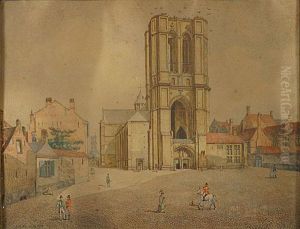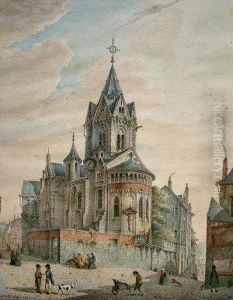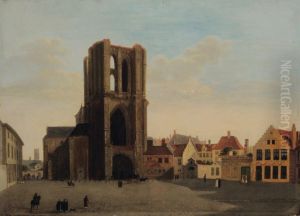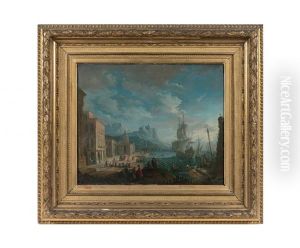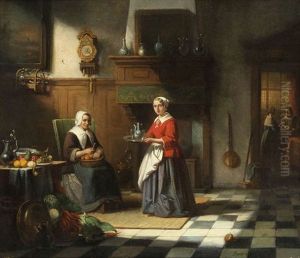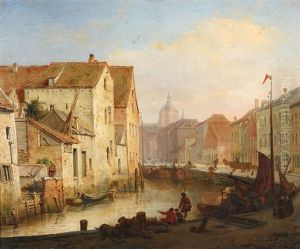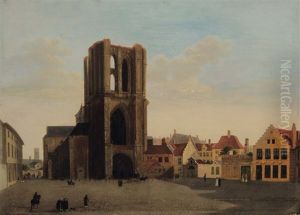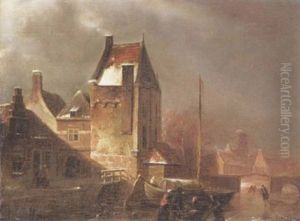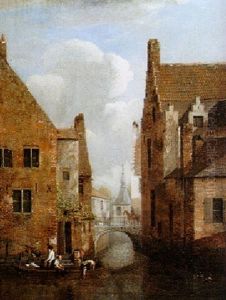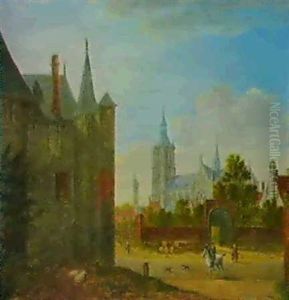Jean-Baptiste Andre De Noter Paintings
Jean-Baptiste André de Noter was a Belgian artist born on January 16, 1829, in Ghent, Belgium. He was a painter who specialized in interior scenes and still lifes, often imbued with a sense of tranquility and meticulous attention to detail. De Noter stemmed from a family with artistic roots; his father, David de Noter, was a well-known painter of architecture and genre scenes, which likely influenced Jean-Baptiste's own artistic direction.
De Noter received his artistic training under the guidance of his father and at the Academy of Fine Arts in Ghent, where he honed his skills in drawing and painting. His early works demonstrate a fascination with the play of light and shadow, as well as a keen observation of the domestic and ecclesiastical interiors of his time. He was particularly adept at rendering textures and materials, from the soft glow of candlelight on metal and glass to the intricate patterns of textiles.
Throughout his career, Jean-Baptiste André de Noter exhibited his works in various salons and expositions, gaining recognition for his technical prowess and his ability to evoke a sense of calm and contemplation through his art. His paintings often featured elements of daily life, such as elegantly laid tables, ornate furniture, and quiet domestic moments, rendered with a level of detail that invited viewers to pause and explore each element of the composition.
The latter part of the 19th century saw a shift in artistic styles and tastes, with movements such as Impressionism and Post-Impressionism gaining prominence. Although de Noter's style remained rooted in his classical training and his emphasis on realism, his works continued to be appreciated for their beauty and craftsmanship. Jean-Baptiste André de Noter passed away on March 27, 1895, leaving behind a legacy of paintings that continue to be admired for their quiet elegance and meticulous detail.
